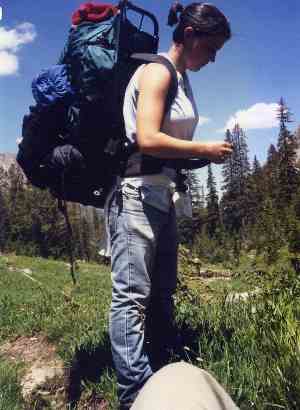
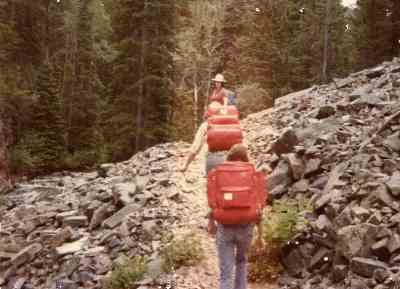
| Route 66 | Cities | Beaches |
 |
 |
| Red
River Gorge |
Mammoth
Cave |
Sheltowee Trace |
Big South Fork |
| Cumberland Trail (Tenn.) | Shawnee Trail (Ohio) | River to River Trail (Illinois) | Knobstone Trail (Indiana) | Pinhoti Trail (Ala.) | Dolly Sods (W.Va.) |
| Kentucky is the center of the greatest network of backpacking trails east of the Rockies. The Commonwealth includes five national parks, America's best state park system, one of its greatest national forests, four long distance trails, two university owned forests, a single mountain 200 miles long, and three wilderness areas. These expanses contain several stands of virgin timber, numerous trails originally trod by Indians and still replete with arrowheads and fireholes, the world's largest cave system, its second largest collection of natural arches, and lingering traces of a rich frontier history. The shadows of Daniel Boone, George Rogers Clark, Simon Kenton, Meriwether Lewis, and other trailblazers loom large here.Their names are on places everywhere, and many of the trails and campsites once felt their boot prints. And you'll be hiking with Elk, Black Bear, Razorback Hogs, Bald and Golden Eagles, Raccoon, Possum, Wildcats, Red Tailed Hawks, and the world's largest Catfish. | However, the states adjacent to Kentucky also boast outstanding long distance backpacking trails. The best of these are the spectacular Cumberland Trail just over the border in Tennessee, the River to River Trail in Southern Illinois and the Knobstone Trail in Indiana, all linear trails which require shuttles. The Shawnee Trail in Ohio just northeast of Maysville is a loop trail. West Virginia contains half a dozen great backpacking trails, of which the most famous is Dolly Sods northeast of Elkins. There's the Ozark Highlands Trail, which follows the Buffalo River through mountain wilderness in Arkansas. There's a network of trails around Mt. Rogers National Recreation Area in Southwestern Virginia. And don't forget Smoky Mountains National Park, which is only three hours from Lexington. We cover the Smokies in our National Parks section. |
For additional trip reports, photos and discussion, we recommend http://flyingfishmanky.com
|
|
Kentucky is a state of frequent rains and streams running everywhere. Lugging water jugs is not necessary, but a good purification kit is. The water here is high in calcium and trihalymethanes and low in industrial contaminants and giardia. We have tested the various kits in lab and field and found the Pur Explorer does the best job in these conditions for groups, but the old First Need units still work fine for individuals. Prime backpacking season in the South Midwest is Autumn. Spring is rainy, and even if you steal a sunny weekend, you'll be fording swollen streams, camping in mud, and negotiating slippery trails. Summers are a sauna, with suffocating heat and humidity made worse by ticks and chiggers. However, we have glorious golden Autumns from August to Thanksgiving. Crisp temperatures, clear blue skies, weeks without rain, and pleasant nights await hikers. Streams are low and leaves are in color. |
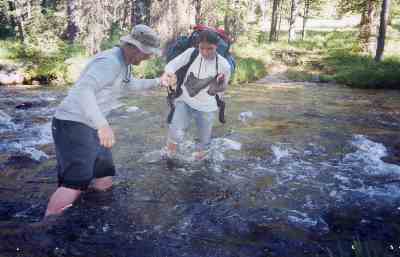 |
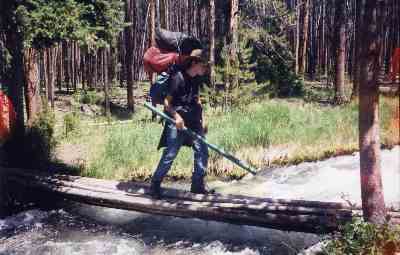 |
The Red River Gorge is Kentucky's most famous outdoor playground. A magnificent semiwilderness of deep ravines, towering cliffs, dense greenery and impressive rock formations, the Gorge is 45 minutes out of Lexington and accessible by two interstates. It is considered one of the greatest rock climbing destinations on the planet, and is a mecca for hikers, backpackers, canoers and cyclists. Trailheads display license plates from a dozen states. However, all those people crowd the paths and campsites, and lately there has developed a vehicle vandalism issue. Mammoth Cave is famous for subterranean wonders, but a magnificent forest covers its surface. The extensive trail network winds through some of the most beautiful mixed mesophytic woodlands in America. Rarely do you see anyone else on the trails. And Mammoth Cave offers the best two and three day loops in the South Midwest. |
For additional trip reports, photos and discussion, we recommend http://www.kywilderness.com |
|
Cumberland Gap, however, has the best two or three day linear trail. You walk a ridge that is the Kentucky - Virginia state line. The trail is mostly level, but you're above six thousand feet, looking far down on both sides. The glimpses out across Virginia and Tennessee to the distant Smokies are awesome. if you really want to lose yourself for a week or a weekend, try Big South Fork National Park, half in Kentucky and half in Tennessee. The same size as Smoky Mountain National Park but undeveloped due to lack of federal funding, BSF has miles of isolated trails and stunning scenery. The Land Between The Lakes offers a long distance trail that allows you to stop several times a day for brief swims. LBL is a 100 mile finger of land that runs north-south between two of North America's largest freshwater lakes. |
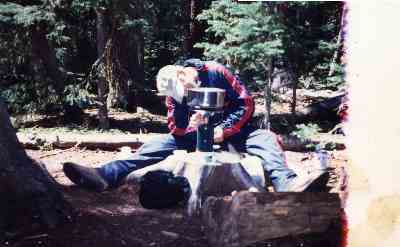 |
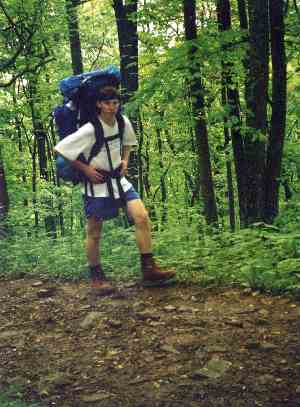 |
Anyone wanting a monthlong adventure can try the Sheltowee Trace. An old Shawnee trail, it runs from Pickett State Park at the Tennessee state line to Portsmouth, Ohio, a southwest to northeast axis. Along the way, it runs through Big South Fork, Cumberland Falls State Park, Rockcastle Canyon, the Red River Gorge, Cave Run State Park and 12 counties of the Daniel Boone National Forest. It winds along whitewater rivers, towering cliffs and wide lakes. The Ozark Highland, Cumberland and River to River Trails take about three weeks. The Kentucky Lake, Pine Mountain, and Monongahala Trails take about two weeks. The others take anything from a weekend to a week depending on how you design the trip. Everyone's schedule does not allow it, but if you can get away during the week, you can achieve almost total isolation on these trails. The crowds descend on the weekends, especially the three day weekends of Labor Day, Memorial Day and July 4th. One problem we have in the Ohio Valley is the lack of outfitters in small towns near trailheads. The backpacking shops are in Lexington, Louisville, Bowling Green, Knoxville and Cincinnati. Make sure you're properly equipped before leaving home.
|
|
|||
|